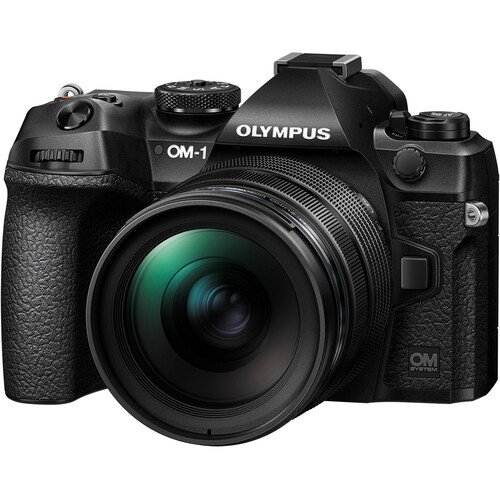OM SYSTEM OM-1 Studio Tests (by DPReview)
DPReview published their test studio test results for the new OM SYSTEM OM-1 mirrorless camera.
- 20MP Stacked BSI Live MOS MFT Sensor
- DCI/UHD 4K 60p 10-Bit Video Recording
- 10 fps Shooting, 120 fps with E. Shutter
- Cross Quad Pixel Phase-Detection AF
- 5.76m-Dot OLED Electronic Viewfinder
- 3.0″ 1.62m-Dot Swivel Touchscreen LCD
- 5-Axis In-Body Image Stabilization
- High-Res Shot, Live ND & Composite Modes
- IP53 Weather-Sealed & Freezeproof Design
- Dual UHS-II SD Card Slots
Studio scene
At higher ISOs the newer camera appears to preserve detail rather better, and gives a rather larger-grained appearance to the noise in areas without detail. Look at the Raw and there’s no appreciably difference in noise between the OM-1 and E-M1 III, which is in-line with what we’ve seen in previous BSI and Stacked CMOS sensors. It’s worth noting, though, that the OM-1 keeps up with the older camera’s highest ISOs, which is impressive, as this is where we’d expect its more complex design (with four photodiodes per output pixel) to start to count against it.
Dynamic range
In terms of dynamic range, it’s a similar story. If you brighten an ISO 200 image to the same level as an ISO 1600 shot, there’s no appreciable difference in noise. This shows that there’s very little electronic (read) noise being added by either sensor. Traditionally, high ISOs has lower read noise levels because amplification lifted the captured signal (and whatever read noise arrives upstream of the amplified) above the level of any other read noise. Here there’s very little difference.
A performance that’s essentially the same as preceding models, with any improvement being in terms of JPEG processing may seem a little anticlimactic, after the widespread discussion of improvements measured in whole stops. But, just as we were impressed by how little DR the Sony a1 had to give up, in return for its impressive readout speed, here we’re seeing a sensor with quad-pixel X-type AF and twice the previous readout speed without any significant image quality cost. That’s an impressive result, given what the speed should allow the camera to do.
Conclusion:
A performance that’s essentially the same as preceding models, with any improvement being in terms of JPEG processing may seem a little anticlimactic, after the widespread discussion of improvements measured in whole stops. But, just as we were impressed by how little DR the Sony a1 had to give up, in return for its impressive readout speed, here we’re seeing a sensor with quad-pixel X-type AF and twice the previous readout speed without any significant image quality cost. That’s an impressive result, given what the speed should allow the camera to do.
You can read the full OM SYSTEM OM-1 studio tests at DPReview.
OM SYSTEM OM-1 body: $2,199 at Amazon, B&H, Adorama.
OM SYSTEM OM-1 with 12-40mm f/2.8 Lens: $2,799 at Amazon, B&H, Adorama.
Read more:

